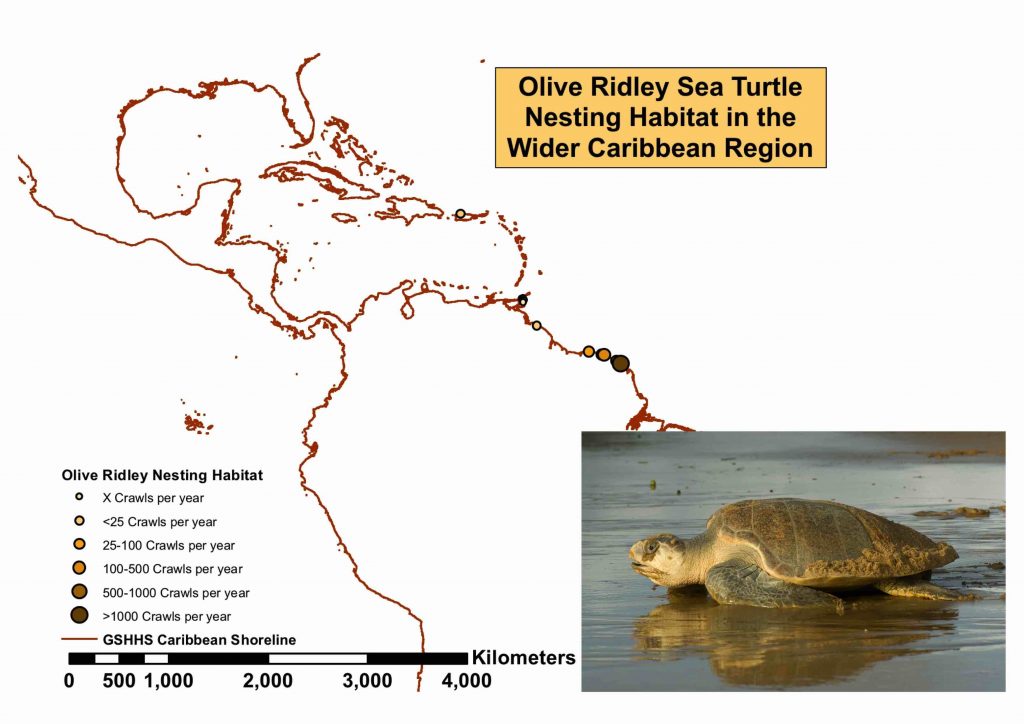Chart by Visualizer
Olive ridley sea turtles (Lepidochelys olivacea) are largely confined to the southern latitudes of the Wider Caribbean Region(*). Nesting takes place at 12 sites, the majority (92%) of which host fewer than 100 nests per year. The trend line represents the cumulative sum of nests laid each year on three monitored Index Beaches (Zéphyr-Montabo, Salines Montjoly, and Gosselin Apcat) in the Cayenne-Montjoly region of eastern French Guiana, which together host more than 90% of all known nesting by this species in our region. Source: 2008-2018 data from Berzins & Paranthoën (2019).
 *UNEP defines the Wider Caribbean Region (WCR) as comprising the States and territories of the insular Caribbean (including the Bahamas), the north-eastern sector of South America (Colombia, Venezuela, the Guianas), Central America, Mexico and the USA to 30ºN latitude, including the waters of the Caribbean Sea, the Gulf of Mexico, and the Atlantic Ocean adjacent to these States and territories.
*UNEP defines the Wider Caribbean Region (WCR) as comprising the States and territories of the insular Caribbean (including the Bahamas), the north-eastern sector of South America (Colombia, Venezuela, the Guianas), Central America, Mexico and the USA to 30ºN latitude, including the waters of the Caribbean Sea, the Gulf of Mexico, and the Atlantic Ocean adjacent to these States and territories.